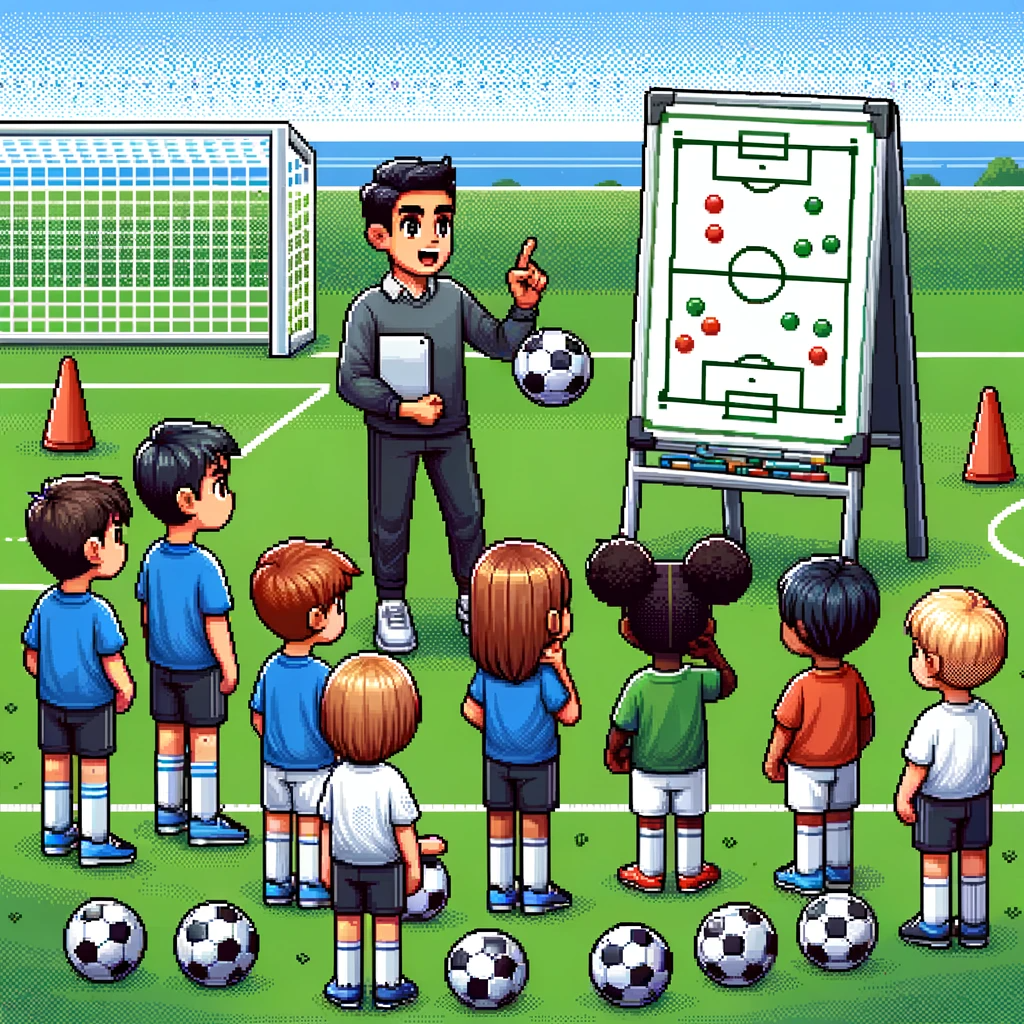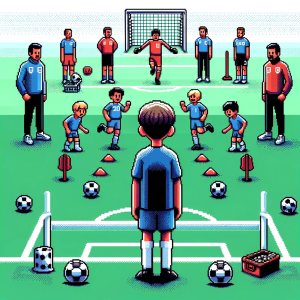
Engaging the Future: Implications for Soccer Coaching and Player Development
In professional youth soccer, coaching behaviors and practice activities are instrumental in shaping the future of young athletes. The study, “An Investigation of the Practice Activities and Coaching Behaviors of Professional Top-Level Youth Soccer Coaches,” dives deep into the nuances of elite English youth soccer coaching.
The Core of the Study
The study focuses on the coaching behaviors in different practice settings and the cognitive processes driving these behaviors. Splitting practice activities into “training form” and “playing form” explores the quantity and quality of instructions provided by coaches and how these approaches align with the broader goals of developing young soccer talents. The study reveals a significant reliance on “training form” activities and a high level of prescriptive instruction, contrasting with coaches’ expressed desire to develop decision-making skills and facilitate knowledge creation among players.
Key Findings and Implications
- Training vs. Playing Form: Coaches predominantly use “training form” activities, characterized by repetitive skill drills and physical training. This contrasts with “playing form” activities, which simulate actual game scenarios and are more dynamic and contextually rich. The study suggests a need for a balanced approach, as overemphasis on training form may not fully prepare players for the complexities and unpredicted nature of actual matches.
- Prescriptive Instruction: Despite the intention to develop autonomous decision-makers, coaches often fall back on a high level of prescriptive instruction. This approach might hinder the development of players’ problem-solving skills and autonomy, crucial attributes in high-level soccer.
- Gap in Coaching Practice: There is an evident gap between what coaches know and how they apply it, known as the epistemological gap. Many coaches express a forward-thinking approach but revert to traditional, directive coaching methods due to habit, lack of awareness, or environmental constraints.
- Self-Awareness in Coaching: The research highlights coaches’ low self-awareness regarding their actual training behaviors. This lack of self-awareness can prevent coaches from adjusting their methods to be more effective and in tune with modern coaching philosophies.
Moving Forward: Recommendations for Coaches and Player Development
To address these findings and propel youth soccer into a future of more effective training and development, the following recommendations are suggested:
- Embrace Playing Form: Coaches should incorporate more “playing form” activities that mimic real game situations. This not only makes practice sessions more engaging and relevant but also helps players apply learned skills contextually, enhancing their decision-making and adaptability.
- Reflective Practice: Coaches need to engage in reflective practices to bridge the gap between knowledge and application. By becoming more self-aware and critically analyzing their coaching behaviors, they can align their practice methods with their developmental goals.
- Educational Reform: Coach education programs should emphasize the importance of understanding and applying diverse coaching behaviors. These programs need to equip coaches with the skills to self-reflect and adapt their coaching style to various contexts and individual needs.
- Positive Reinforcement and Questioning: Encouraging a positive environment with an appropriate balance of praise and constructive feedback fosters player confidence and resilience. Incorporating divergent questioning strategies can further enhance critical thinking and problem-solving skills among young players.
Summary
As we look toward the future of soccer coaching, it’s clear that embracing a player-centered approach, promoting self-awareness among coaches, and balancing various forms of practice are key to developing the next generation of soccer talent. This study sheds light on current practices and serves as a catalyst for change, encouraging coaches to reflect, adapt, and innovate.



